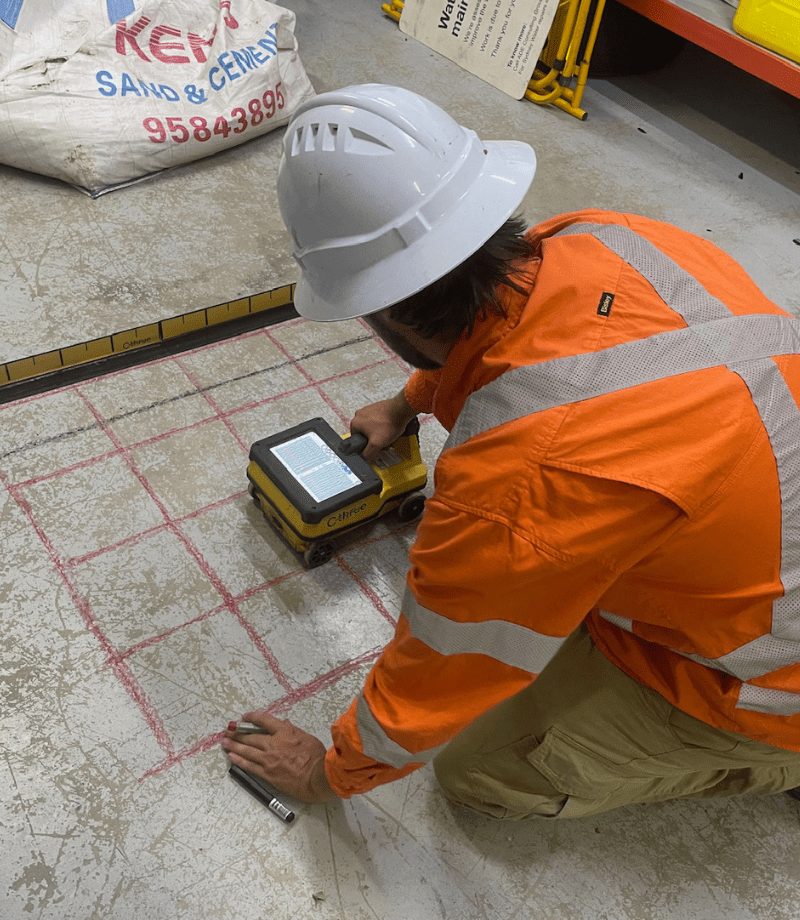Discover RainierGPR Service Areas for Specialist Concrete Scanning
Discover RainierGPR Service Areas for Specialist Concrete Scanning
Blog Article
Concrete Scanning: A Critical Action Towards Making Certain Architectural Honesty and Security
In the realm of building and construction and framework upkeep, the importance of concrete scanning can not be overstated. This careful process holds the crucial to unveiling possible risks concealed under the surface area of relatively solid structures. By utilizing advanced innovation and approaches, concrete scanning functions as a pivotal device in making certain that the honesty and safety and security of structures and bridges are promoted to the highest possible standards. Nonetheless, beyond its surface-level effects, the duty of concrete scanning expands much deeper than meets the eye.
Relevance of Concrete Scanning
Concrete scanning plays a critical function in guaranteeing the architectural honesty and safety and security of structures and framework projects. By utilizing advanced technologies such as ground-penetrating radar (GPR) and electro-magnetic induction, specialists can non-destructively examine concrete structures to detect possible problems, voids, ingrained objects, and support format. This procedure enables early detection of abnormalities that might compromise the stability of a structure, stopping pricey damages and guaranteeing the security of occupants.
Concrete scanning is particularly essential throughout the planning and construction stages of a job. Prior to exploration, reducing, or coring into concrete, scanning helps determine the accurate places of rebar, post-tension wires, and various other embedded components, reducing the risk of unintended hits that could cause architectural weaknesses. Furthermore, concrete scanning help in quality assurance by validating the density of concrete covers and identifying any kind of discrepancies that may impact the total resilience of the structure. Inevitably, buying concrete scanning solutions is not just a positive measure to reduce threats but also a basic action towards keeping the long-term security and security of buildings and framework.
Innovation for Concrete Assessment

Advantages of Very Early Discovery
Prompt discovery of structural issues can considerably reduce dangers and guarantee the long life of construction projects. By identifying prospective issues beforehand in the building process, stakeholders can take aggressive procedures to deal with concerns prior to they get redirected here intensify right into bigger and much more expensive problems. One of the vital benefits of very early detection is the avoidance of structural failures, which can present severe security dangers and bring about task delays and financial losses.
In addition, early discovery enables for prompt repairs and upkeep, which can help extend the life-span of the structure. By resolving concerns quickly, building teams can stay clear of expensive repair services and even the need for premature replacement of architectural components. This positive technique not just saves money and time however also enhances the general safety and sturdiness of the building job.
Additionally, early detection can boost job preparation and decision-making by offering stakeholders with useful understandings right into the problem of the structure. Armed with this information, task supervisors can make informed selections concerning building timelines, products, and methods, leading to more successful and effective project outcomes.
Making Sure Architectural Stability
Guaranteeing the architectural security of a construction job is paramount to its safety and security and longevity. Concrete scanning plays an essential role in guaranteeing structural security by identifying prospective problems such as spaces, delamination, or support corrosion that could jeopardize the honesty of the framework over time.
By utilizing innovative scanning technologies like ground-penetrating radar (GPR) and electro-magnetic induction, construction specialists can non-invasively evaluate concrete structures to recognize areas of concern underneath the surface area. This proactive approach enables for the very early discovery of issues or weak points, making it possible for punctual repairs or support to avoid architectural failings.
Regular concrete scanning throughout various construction phases and throughout the life cycle of a framework can aid maintain its stability, alleviate risks, and guarantee the safety of owners. By focusing on structural security through concrete scanning, construction jobs can boost their strength and longevity, inevitably adding to better safety and security and longevity.
Avoiding Critical Failures
Executing regular examinations, such as concrete scanning, can disclose covert problems like spaces, cracks, or rust that could jeopardize the integrity of a framework. By utilizing innovative scanning modern technologies like Ground Passing through Radar (GPR) or Concrete X-ray, designers can non-destructively analyze the condition of concrete and determine useful reference weak factors that require reinforcement or repair service.

Conclusion
To conclude, concrete scanning plays a crucial function in guaranteeing structural stability and safety and security by using innovative technology for early discovery of prospective concerns. This positive approach aids prevent critical failures and guarantees the stability of structures. It is necessary to focus on concrete assessment as a conventional method to safeguard the long life and safety of structures and framework.
Concrete scanning plays a critical duty in making sure the architectural honesty and safety of buildings and infrastructure tasks. In addition, concrete scanning aids in top quality control by confirming the density of concrete covers and identifying any type of discrepancies that might influence the general resilience of the framework. Concrete scanning plays an essential duty in ensuring architectural stability by detecting prospective concerns such as spaces, delamination, or reinforcement corrosion that can compromise the stability of the structure over time.

In final thought, concrete scanning plays a crucial role in making sure architectural honesty and safety by utilizing sophisticated innovation for early discovery of potential problems.
Report this page